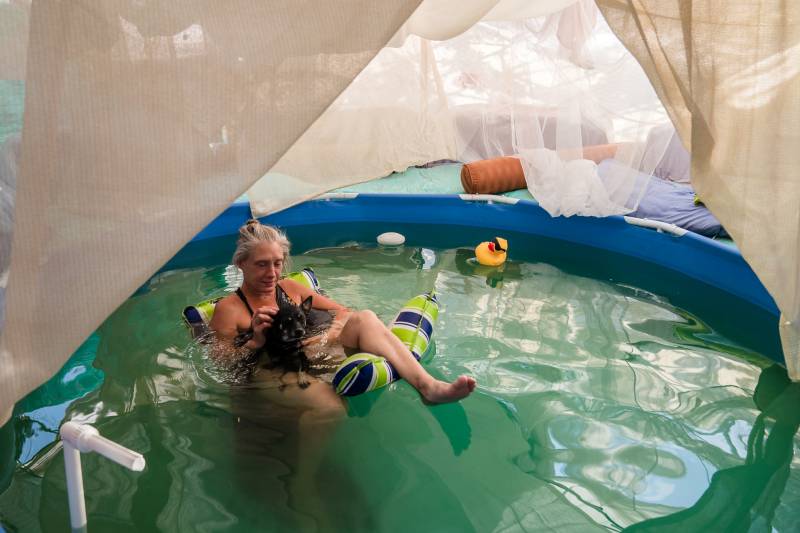Excessive-heat warnings were in effect for Southern California and up into the Central Valley. The heat was expected to spread into Northern California and could top 100 degrees in San Francisco Bay Area hills, although San Francisco probably would only have highs in the 70s and 80s, forecasters said.
The National Weather Service warned of an increased risk of wildfires. The California Department of Forestry and Fire Protection planned to stage fire crews in strategic locations, based on humidity and wind forecasts, said Mark Ghilarducci, director of the Office of Emergency Services.
On Wednesday afternoon, wildfires broke out in bone-dry brush in rural San Diego County and Castaic in the Santa Clarita Valley north of Los Angeles, where a mobile home park was evacuated.
The wildfires quickly burned several thousand acres and shut down highways. Eight firefighters battling the Castaic blaze were treated for heat-related problems and six were taken to the hospital, Los Angeles County Fire Department Deputy Chief Thomas Ewald said.
“Wearing heavy firefighting gear, carrying packs, dragging hose, swinging tools, the folks out there are just taking a beating,” he said.
The risk of fire could also increase over the Labor Day weekend when crowds are expected to descend on wilderness areas to camp, hike or fish and a spark or an ember from an untended fire could set brush ablaze, authorities said.
Meanwhile, California’s power concerns come in the midst of rising temperatures and a drought, both of which have affected much of the West.
Anticipated imports of hydropower from the Pacific Northwest and energy from the desert Southwest dried up because warmer weather in those regions drove up demand there, Mainzer said.
Despite more than 160 projects to increase power supply and storage by 4,000 megawatts after outages two years ago, the state’s power supply was partly flattened by the impact of the ongoing drought, which has sapped a significant share of the state’s hydropower production as reservoir levels drop.
Newsom’s order allows use of backup diesel generators to put less strain on the system and won’t require ships at port to plug into onshore electricity sources. The move is expected to increase air pollution, but Karen Douglas, the governor’s senior energy advisor, said the priority was to keep the lights on.
On Wednesday, the Legislature approved extending the life of the state’s last operating nuclear power plant by five years to maintain reliable power supplies in the climate change era. The bill, which Newsom is expected to sign, would keep Pacific Gas and Electric’s Diablo Canyon Power Plant running beyond a scheduled closing by 2025.
This story includes reporting from KQED’s Juan Carlos Lara and Mina Kim.

